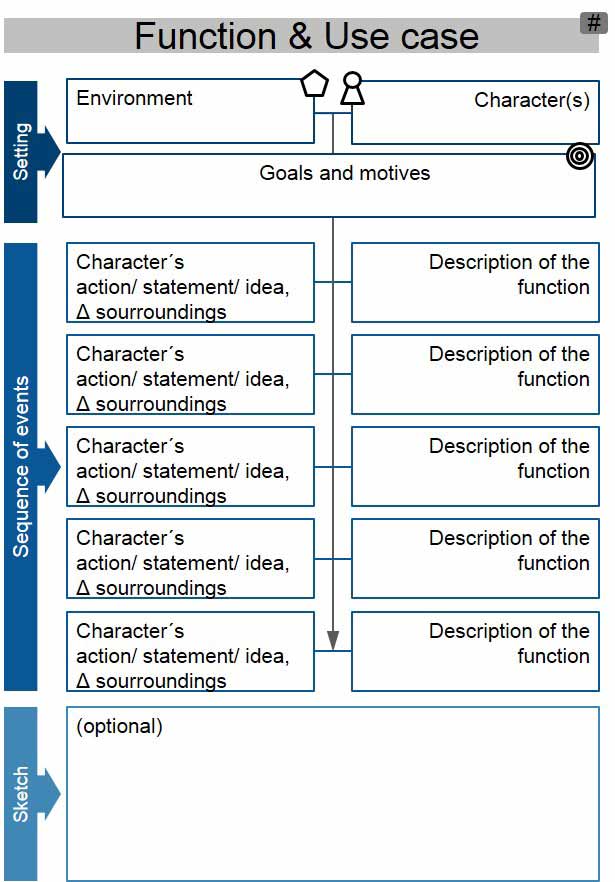Create a Story.
Give a Human Face to the Opportunities and Ideas.
Why.
The process of compiling a story promotes the understanding of the system from the view of the user in the interaction context and requirements can be derived therefrom.
What.
Determine the setting and the time sequence and formulate the story in three steps. Along the way, write down important points for the clarification of requirements.
How.
Use cases, characters, motives, needs.
Define the story characters with their motives and goals and the physical environment of the interaction as "setting".
Enter the description of the interaction on the template, the actions of the characters and/or changes in the surroundings that have an influence on the interaction with the product, or that are influenced by the product, on the left side of the template. Document changes from the technical product side on the right-hand side of the template. These can often be formulated in the next step as technical requirements.
In the next step, present the possible interaction sequence of the previously described characters with the development object as an experience story. Here the individual goals and the experiences of the character are in the forefront with the development object.
Narrative Story.
Insights
Create an experience story and compose it with the corresponding form to outline a story. A purely textual description is not recommended. In addition to the purely narrative story, use pictures to further clarify important scenes.
References
Thier, K. (2006, 2010). Storytelling. Eine Methode für das Change-, Marken-, Qualitäts- und Wissensmanagement. Berlin Heidelberg, Springer. ISBN 3-642-05109-8 Frenzel, K. M., M.; Sottong, H. (2006). Storytelling. Das Praxisbuch. München Wien, Hanser. ISBN 3-446-40698-0 Michailidou, I., Von Saucken, C., and Lindemann, U. 2013. How to create a User Experience Story. In Proceedings of DUXU/HCII 2013, Part I, LNCS 8012. Springer, Heidelberg, 554–563. Truong, K.N., Hayes, G.R., Abowd, G.D. (2006) Storyboarding: An Empirical Determination of Best Practices and Effective Guidelines. In the Proceedings of DIS 2006: The ACM Conference on Designing Interactive Systems (June 26-28, State College, Pennsylvania), pp. 12-21. Quesenbery, W.; Brooks, K. (2010) Storytelling for User Experience, New York, Rosenfeld Media.




